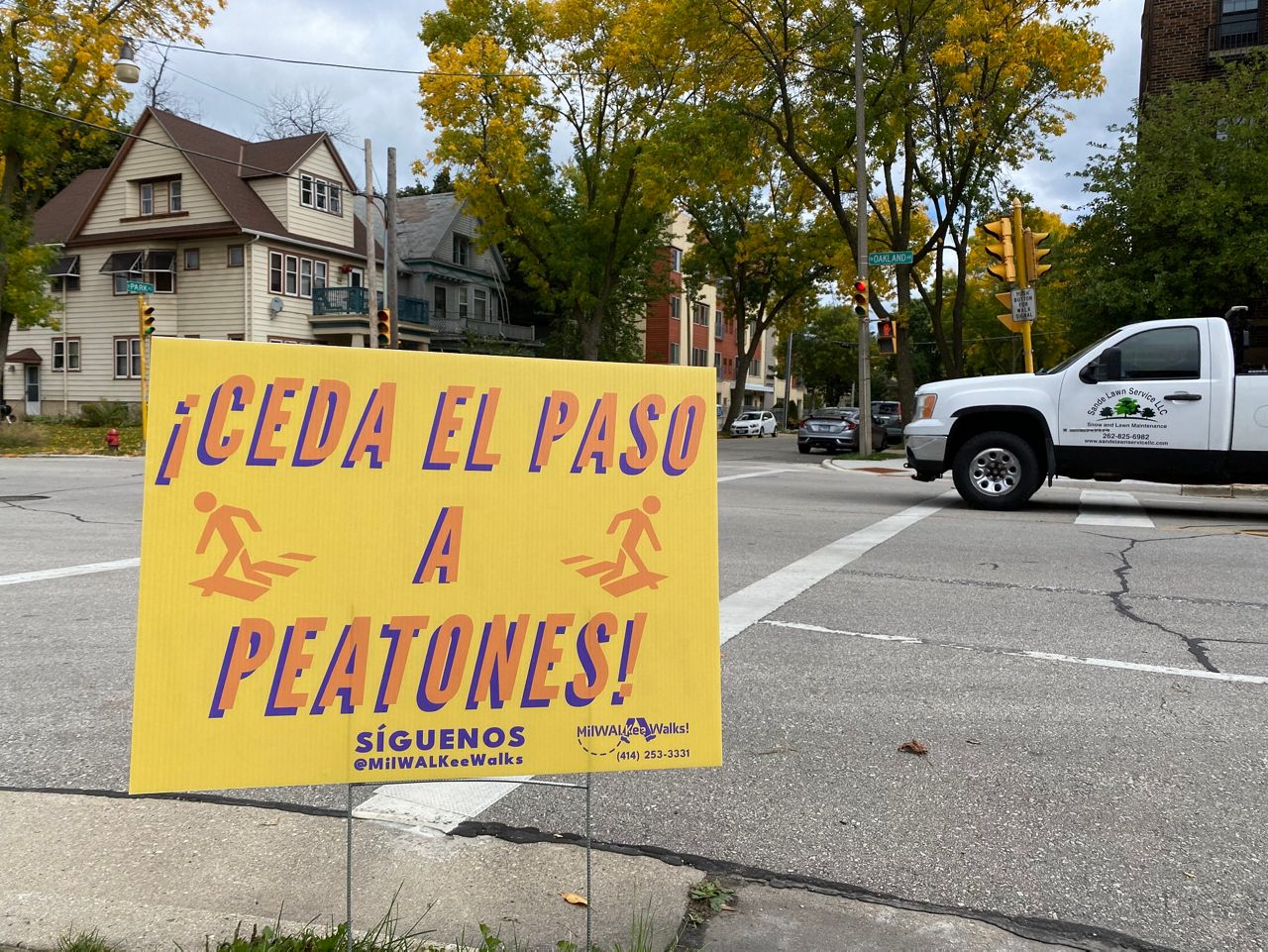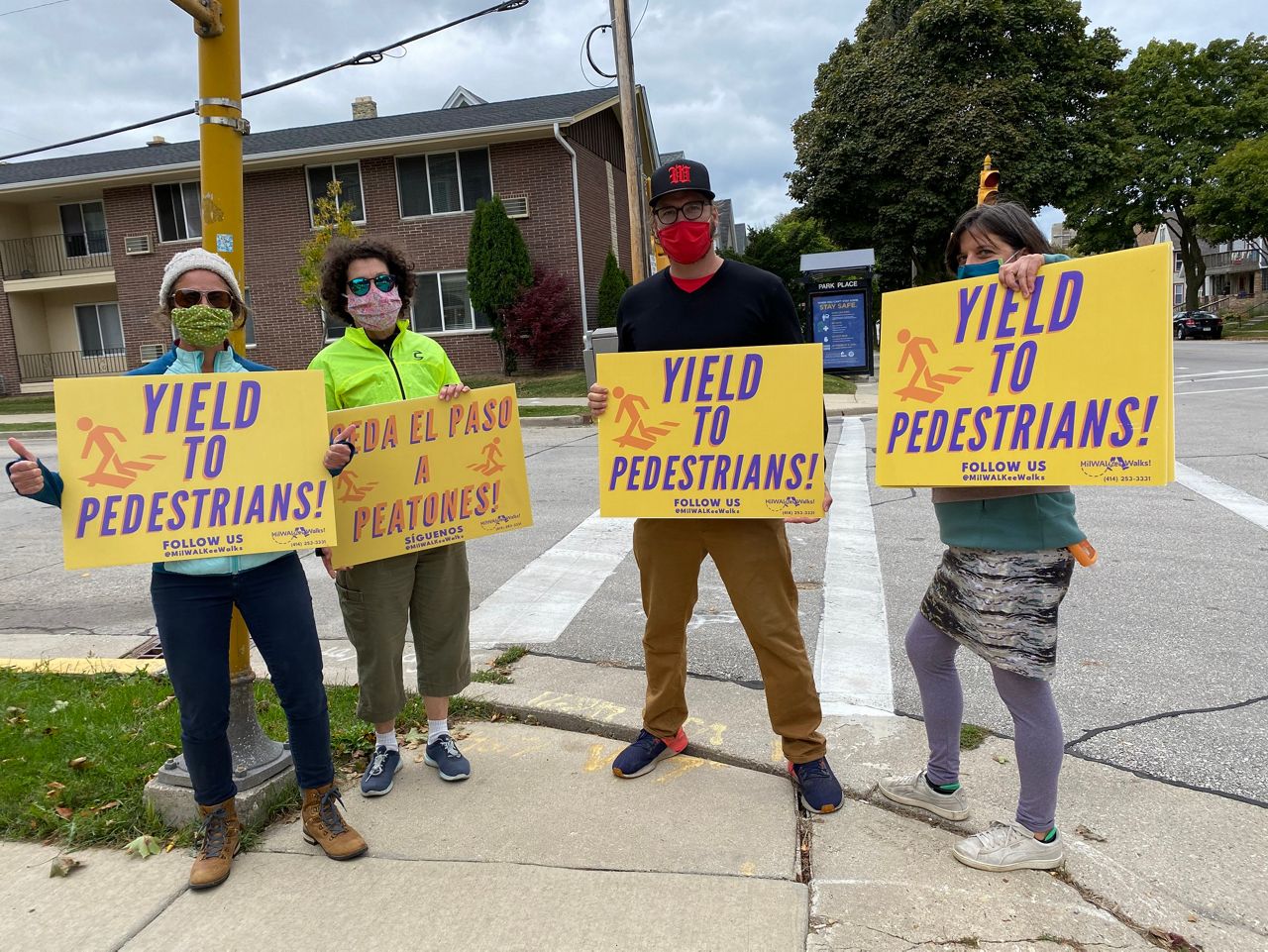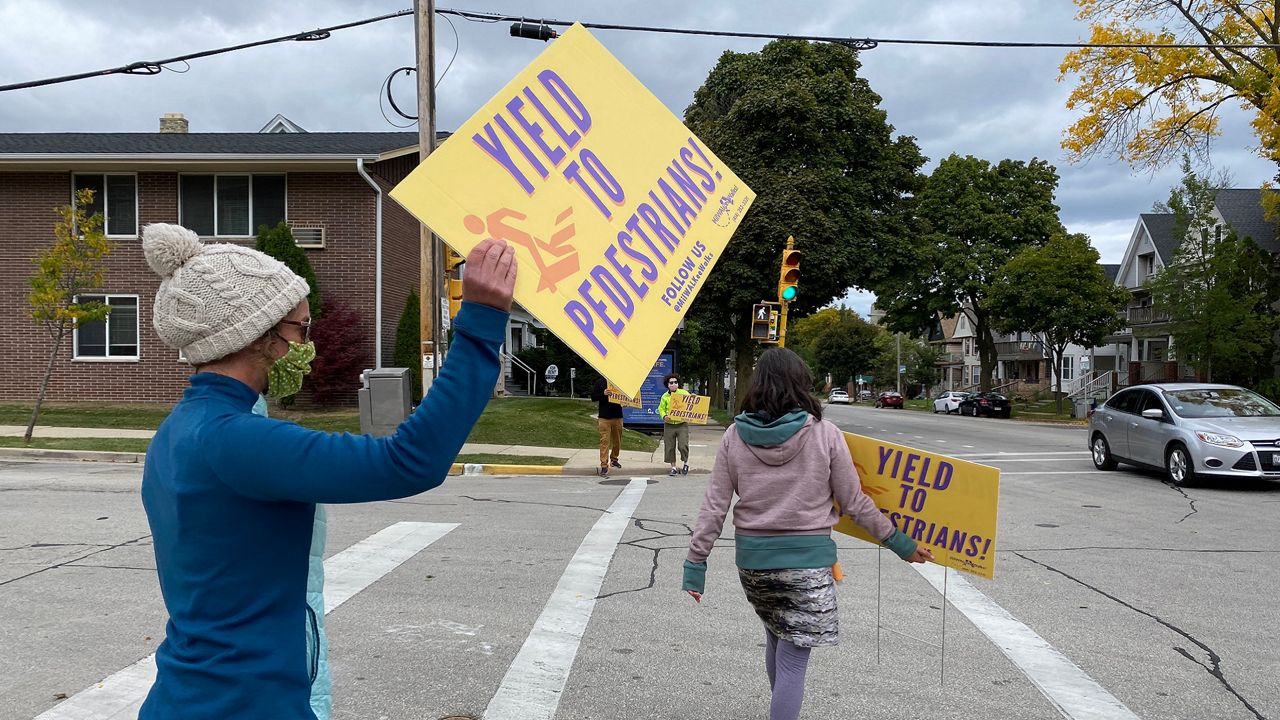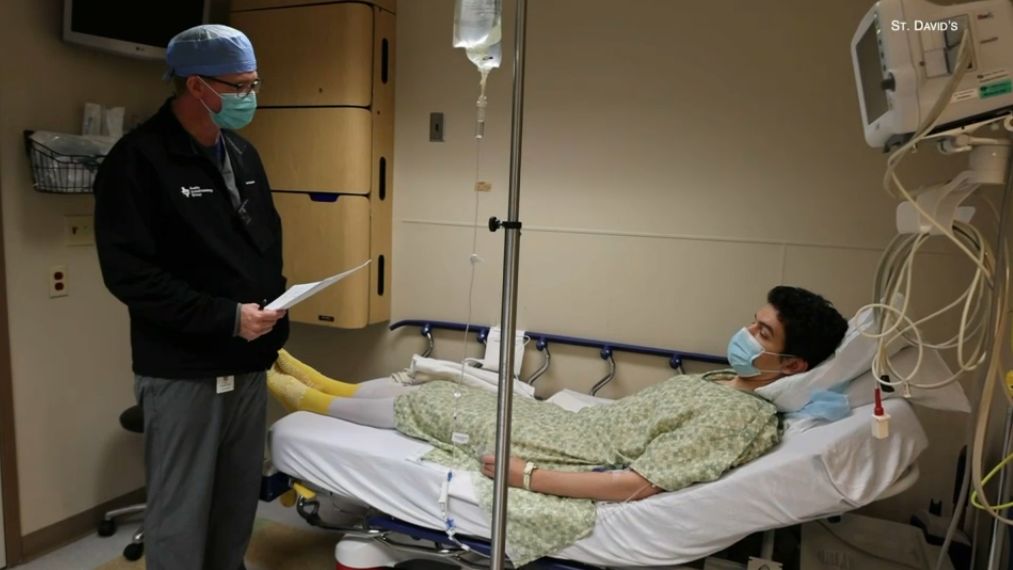MILWAUKEE (SPECTRUM NEWS) — On a gloomy fall afternoon, the walk sign lights up at Oakland Avenue and Park Place. Jake Newborn crosses the street — but not really because he wants to get to the other side.
Newborn is out at this intersection representing MilWALKee Walks, a group focused on making the streets safer for those trying to walk around the city. As he crosses, he holds up a sign encouraging drivers to “Yield To Pedestrians!” as others from the group post the same message around the intersection.
“We’re just trying to do our part here,” Newborn says. “To advocate for local officials and drivers to look out for each other and follow the rules.”
Especially in recent years, he says Milwaukee has been facing a “reckless driving epidemic.” Newborn himself says he was T-boned by a car while walking his bike across an intersection years ago, part of what inspired him to dive into his current line of work.
Across Wisconsin, 32 pedestrians have died in crashes this year so far, according to the Department of Transportation. Between 2008 and 2018, more than 130 Milwaukee pedestrians died in car crashes and hundreds more were injured, according to a report from the Milwaukee Police Department and the Department of Public Works.
To help address the issue, the MilWALKee Walks initiative was started about three years ago as part of the Wisconsin Bike Fed, which mainly focuses on bike education and advocacy. Newborn, the Bike Fed's assistant director, says the group had already been expanding its work to include pedestrians and other “vulnerable road users,” like by educating children through the Safe Routes to School program.

MilWALKee Walks, which receives grant funding from the Wisconsin Department of Transportation, focuses on education and coalition-building efforts to make the city safe and walkable, Newborn says. In addition to teaching Milwaukeeans the actual rules of the road — like that legally, you have to yield to pedestrians, even in unmarked crosswalks — he says it’s important to challenge the harmful mentality that people can fall into when they’re driving. After all, he points out, “everyone’s a pedestrian” at some point.
“People feel a little entitled when they're in their car and they’re feeling rushed, and then someone’s in their way,” Newborn says. “It’s just kind of this mentality that we have to get over. Slow down, and look out for each other, and care about our community.”
As part of its work, the group has been holding a series of “Crosswalk Actions” around the city. They’ll show up to some of Milwaukee’s most dangerous stretches, identified by the city’s Pedestrian High Injury Network, to help people cross the street, hand out educational materials, and generally raise awareness. The city's Pedestrian Safety Summary states that most pedestrian crashes happen at intersections, and especially when cars are turning left over a crosswalk.
Things are pretty quiet at Oakland and Park on Tuesday as Newborn and his team hold their second Crosswalk Action of the day. Mostly, people are appreciative of their work, says Barbara Connolly-Blick, a Safe Routes instructor with the group. However, Newborn says they’ll sometimes get angry reactions from people driving by — some will shout at them or give them “the wrong finger.”
“That's the frustrating thing, and that's the message we’re trying to get out,” Newborn says. “Your slight inconvenience to wait a few seconds, it can be the difference between life and death.”
Along with this mentality of reckless driving, there are a number of other factors that have made the roads less pedestrian-friendly, Newborn says. In terms of city planning, a lot of streets are “built to carry as many vehicles as fast as they can,” rather than to prioritize safe crosswalks, he says. Rises in cell phone use have also contributed to more distracted driving, and increasing car sizes make for deadlier crashes.
It’s not just a city or statewide issue, either: Across the U.S., pedestrian deaths have increased by more than 50% in the past decade, with last year’s fatalities reaching the highest point in 30 years, according to a nationwide report.
Last year, the issue of reckless driving came to the forefront in Milwaukee after two young sisters were killed by a hit-and-run driver who ran a red light. Angela Livermore, another Safe Roads instructor, says she and Connolly-Blick were about to teach a walking safety program to the girls’ classroom that day.

“We're trying to give Milwaukee youth the tools and information to be able to cross safely,” Livermore says. “And they were doing everything correctly. We were at a loss.”
To combat these trends, Newborn says it’s important to make a sustained, preventative effort instead of only reacting when tragic crashes do occur.
MilWALKee Walks plans to continue holding Crosswalk Actions, and encourages community members to reach out if they’re interested in organizing one in their neighborhood. The group is also encouraging drivers to sign up for the “Pace Car Pledge,” promising to slow down and share the road.
Since 2018, Milwaukee has also adopted an official Complete Streets policy to design new projects that will make streets safe and equitable for all residents, though Newborn points out that infrastructure projects take time and money.
In the end, much of the pedestrian safety effort comes down to having empathy for others, Newborn says. Caitlin Hussey, another team member and Safe Roads instructor, says she thinks getting to “zero tolerance” for injury and death should be attainable.
“These are needless deaths. These are preventable deaths,” Newborn says. “And as a society, I'd like to think that we would work to reduce those.”






)
)

